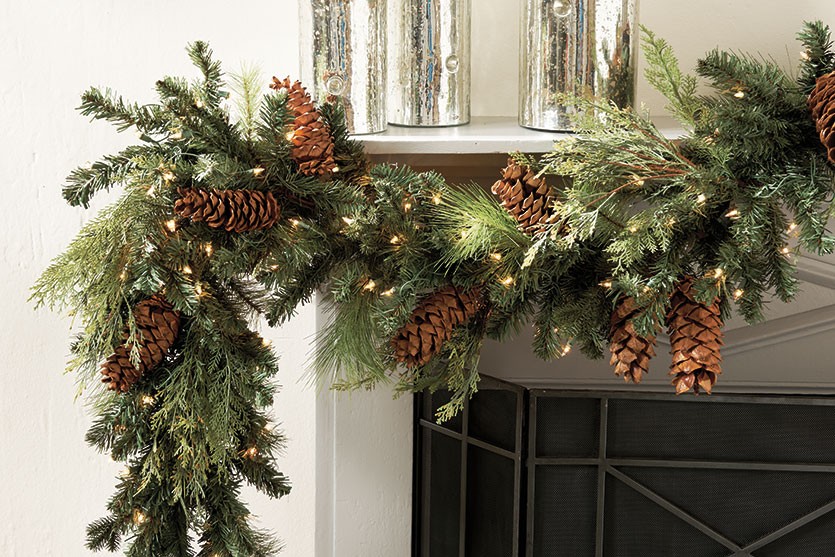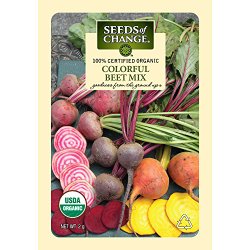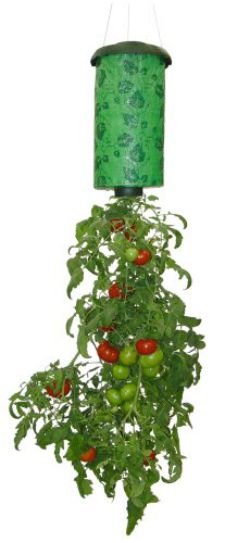Pink Day!!!
PINK DAY IS COMING!!!

Pink Day – Join us in the fight against breast cancer!
Wear your pink and join us on June 10 and support Daniel’s Lawn and Garden Center’s efforts to help find a cure for breast cancer, a cancer that affects way too many Moms, sisters, wives and friends. We donate a portion of the day’s proceeds to the Susan G. Korman Foundation!
…
Any questions about this event please call us at 610-287-9144 or visit www.danielslawnandgarden.com. See you there. Think Pink!!!
Pink Day Events:
Activities & Events
Moonbounce 10-3
Chair Massages 10-12
Trick Jump Rope & Hula Hoop Demo 11-12
Face Painting 11-2
Butterfly Program 12-2
Pony Rides 12-2
Boy Scouts with food & drinks 10-3
Pink Day Special Sales
Topsoil 40lb bag reg $2.99 sale $1.00 Limit 10
Chlorine 5gal liquid reg $19.99 sale $11.99
4in pot vegetable reg $2.99 sale $1.00
50% off all trees and shrubs Limit 10
The Best Spring Gardening Flowers
Pair Bulbs & Hardy Annuals
If your digging arm ran out of steam after planting the first bag of fifty tulips last fall, your spring flower show may not be as lush as you wanted it to be. Interplant your large bulbs, like tulips, daffodils, and hyacinths, with cold hardy annuals. The resulting look will resemble a gardening magazine spread or public garden display you have admired.
The careful digging that allows you to install a nursery six-pack of hardy annual transplants won’t disturb large bulbs, which should be planted 4-8 inches deep. Plant the annuals as soon as they are offered in your nursery, as you should already see green foliage tips emerging from the bulbs. Try these four planting partners this spring:
- Tulips and primroses
- Hyacinths and pansies
- Daffodils and scented stock
- Dutch iris and sweet alyssum
Include Flowering Shrubs
Chris Parrfitt When creating a flowering landscape, follow the garden design principle of starting with trees, then shrubs, then plants. Shrubs not only give the garden texture and dimension, many offer reliable spring flowers for sunny or shady situations. Azaleas herald the arrival of spring in many southern gardens, and forsythia does the same in temperate climates. If the thought of a plain green shrub amidst your flowers doesn’t thrill you, choose a shrub that displays bright berries after its flowers fall, like viburnum. You can also look for newer cultivars of old favorites that have variegated foliage, like daphne ‘Marginata’ in warm climates or elderberry ‘Madonna’ in cold climates.
-
Grow Spring Containers
Mickmft/ Flickr When you include flowering containers in your spring garden, you can get earlier blooms in your garden than when you plant in the ground. You can bring small hanging baskets into a shed or garage when temperatures plummet at night, and even large containers can move to a sheltered area if you employ planters on casters. Some of the most beloved container plants thrive in cool spring temperatures, including snapdragons, petunias, and annual lobelia. These cool season annuals are at their flowering peak when daytime temperatures are in the 70s. Other container flowers, like viola and nasturtium, can tolerate early spring frosts.
-
Plant a Crocus Lawn
Amanda Slater Planting bulbs under a lawn doesn’t take any special skill; the most important care tip for naturalizing flower bulbs in a lawn is to delay mowing until the bulb foliage matures. Therefore, choose the earliest blooming bulbs to plant, unless you don’t mind letting your grass grow as long as strappy bulb foliage. Crocus bulbs are the most commonly grown flowers in a lawn, but you can also try snowdrops or iris reticulata. Slice your sod with a sharp spade, and plant groups of bulbs at least three inches below the soil surface.
-
Choose Early Bloomers
Matt Cardy/Getty Images The colder the climate, the more anxious gardeners are for signs of spring in the landscape. Planting very early bloomers can make you feel like you’ve cheated part of winter, because these hardy bulbs may begin to bloom when the holiday decorations are just coming down. These petite flowers don’t make much of a statement when planted in groups of a dozen or less, but the low price of the so-called minor bulbs makes a planting of a hundred or more affordable.
The common snowdrop, Galanthus nivalis, sports dainty white bell-shaped flowers on six-inch stalks. They bloom as early as January, and naturalize easily in an undisturbed spot. If white flowers are lost in your snowy garden, consider the winter aconite, Eranthis hyemalis, which produce bright yellow flowers atop a ruffled collar of green foliage. Finally, glory-of-the-snow, Chionodoxa luciliae, produces masses of blue, pink, or white star-shaped flowers to satisfy your pastel flower cravings.
Our Easter Egg Hunt and Easter Bunny visit was a great success!!
What a great time we had this past weekend at our Easter Egg hunt and Easter Bunny Visit! Stop on by this week for some great savings as well as checking out our new spring plant arrivals!
Don’t forget our Mulch Madness sale is still going on!
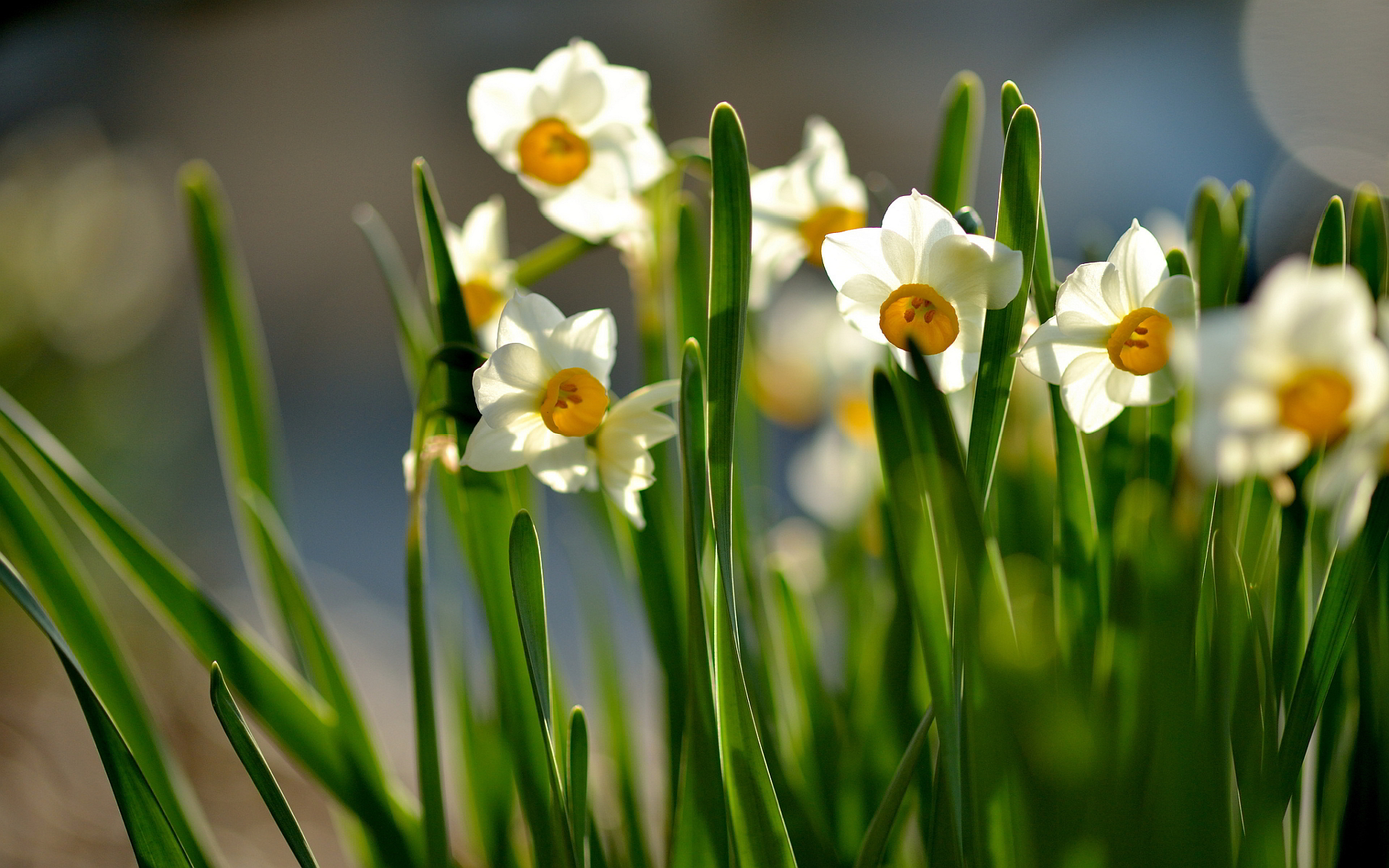
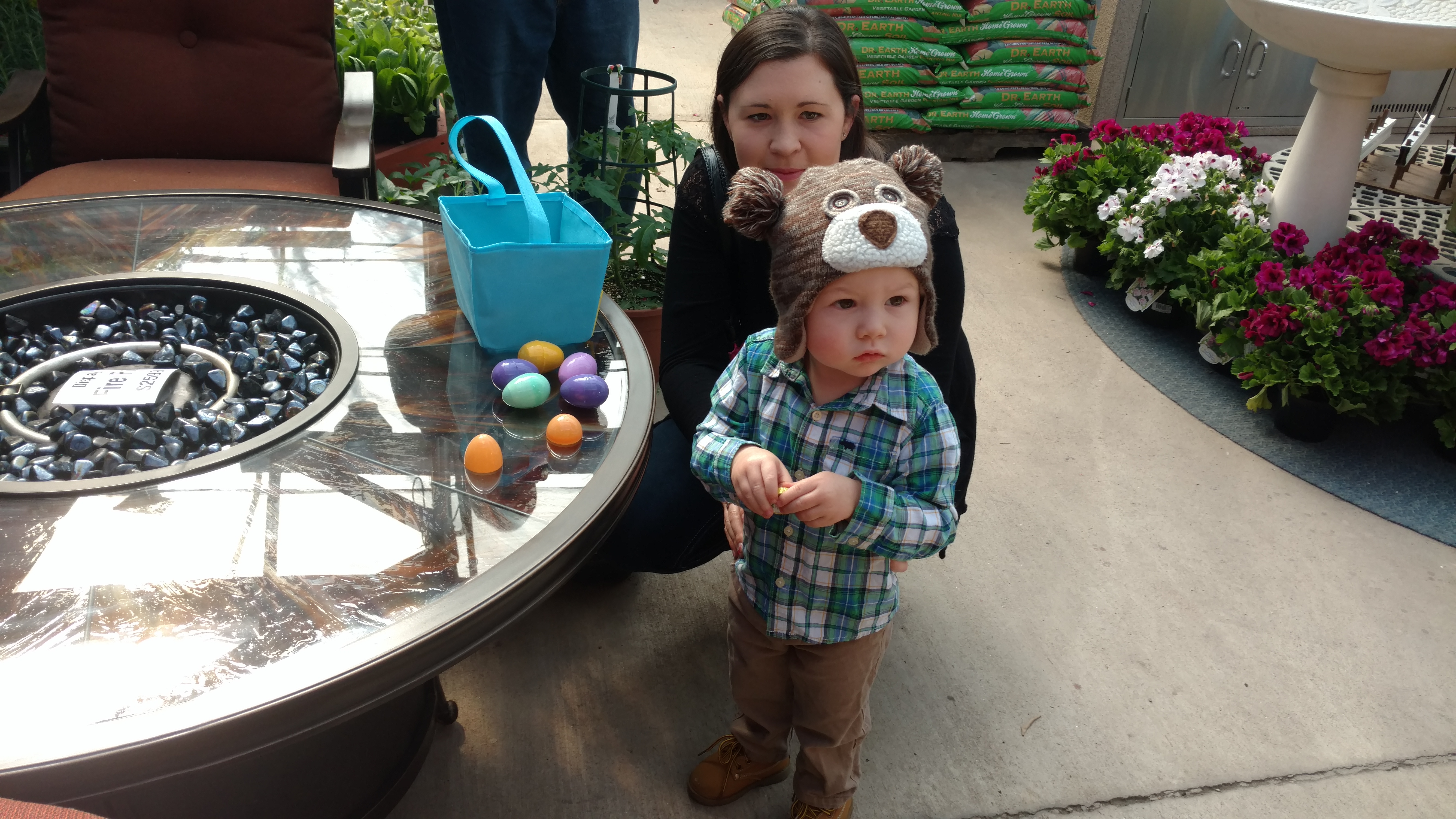
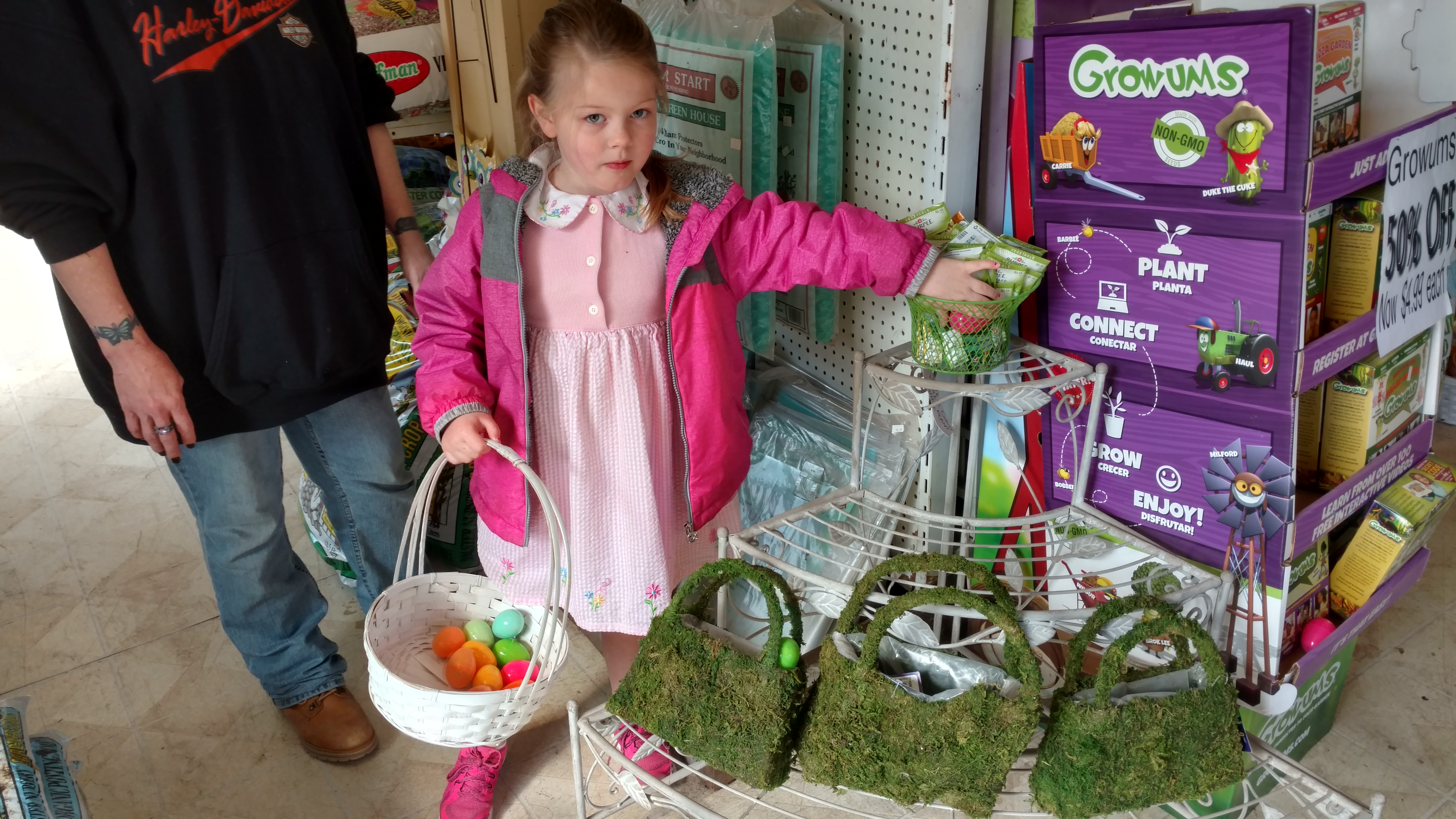






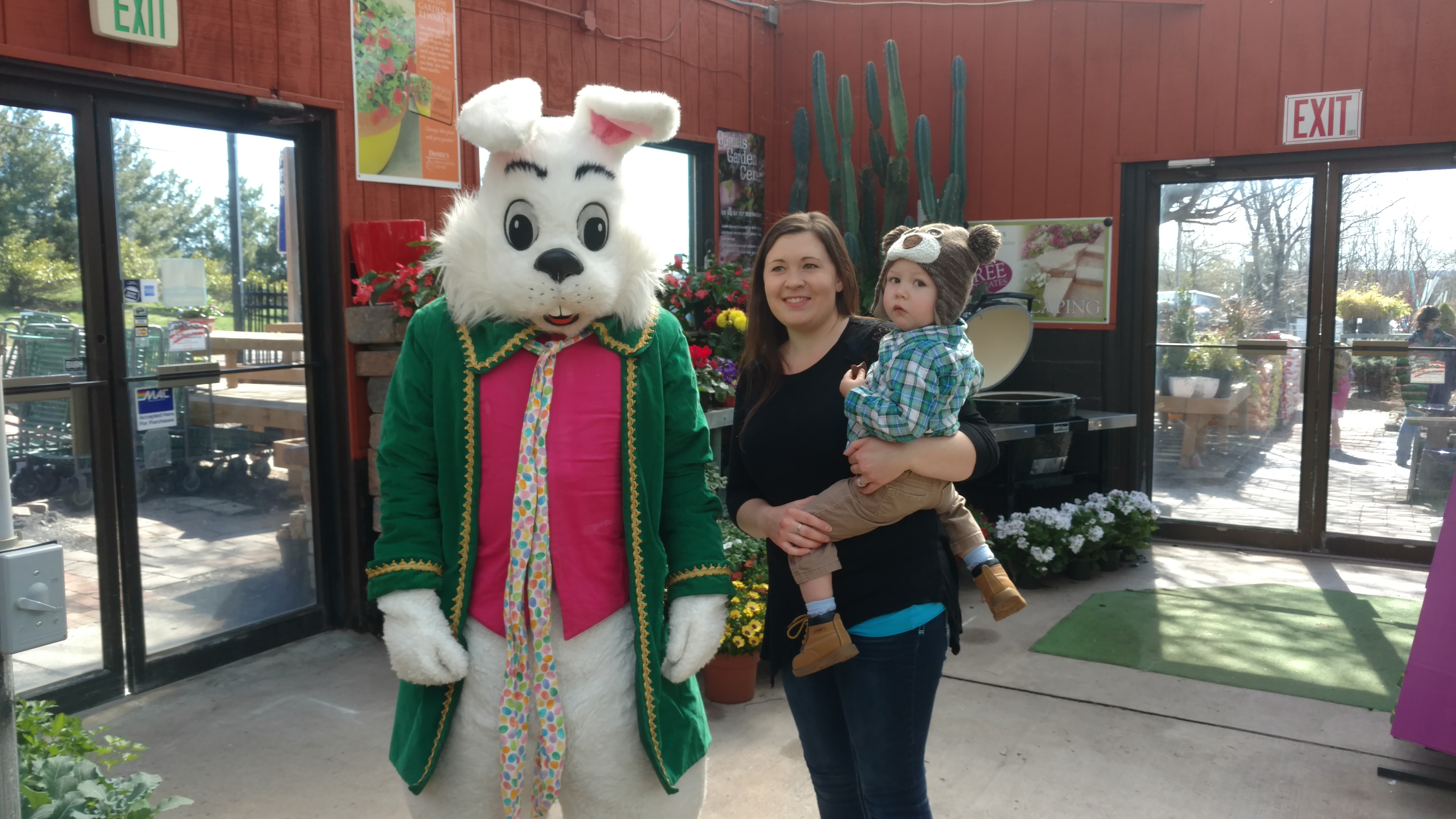


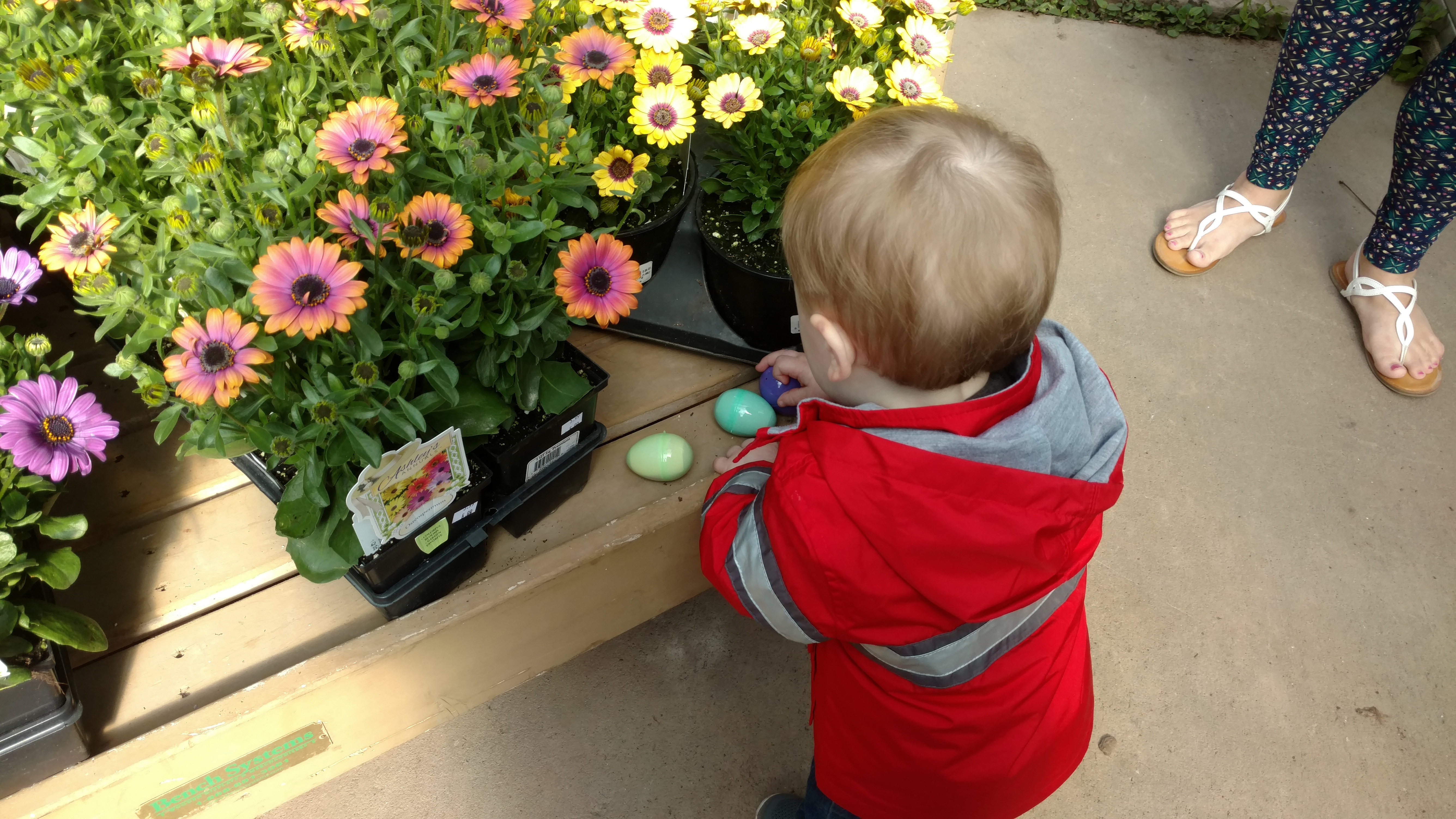


Planting Bulbs In The Winter
Plant bulbs are generally planted in the fall or spring, but in reality, they can be planted anytime so long as you can physically dig a hole. There are many types of bulb plants, including lilies, hyacinths, daffodils and tulips, just to name a few. While each plant is different, you can generally plant them in the same manner, but you should always adhere to the planting instructions that come with your specific bulbs.
Step 1
Plant your bulbs in early winter if possible. You cannot plant bulbs while the ground is frozen, so if it is, place your bulbs in a thick plastic bag called a poly bag, which is available at your local home and garden store. Then store them in a cool, dark and dry place like your garage. However, plant them as soon as possible when you can successfully dig some holes.
Step 2
Plan to plant bulbs about three to six inches apart, depending on the type of bulbs. For instance, tulips and daffodils spread and grow quickly and should be planted about six inches apart, but crocuses and snowdrops should be planted only three inches apart
Step 3
Plan to cluster your bulbs together. You can even mix varieties. Place smaller growing plants in front and larger ones in the back.
Step 4
Dig holes that are about five inches deep for small bulbs and eight inches deep for large bulbs. The diameter of the hole should be twice as large as the bulb.
Step 5
Put the bulbs in the ground with the pointed end facing up. This is the end from which the sprout will emerge.
Step 6
Mix some compost or peat moss in with the soil you just dug up. Use that new soil mix to cover the bulbs. Pat the soil down with your hands to avoid any air pockets.
Step 7
Mulch over the area. A couple inches of mulch will help keep your bulbs in the ground warm until spring when you may see the green sprouts begin to emerge and then bloom soon thereafter. If not, they should bloom the next season.
How To Choose The Perfect Christmas Tree

1. Why purchase a live Christmas tree?
Live trees are the classic choice for the holidays. They offer a fresh and crisp profile and have that familiar scent and feel that remind people of the season.
- Live trees are all-natural. They are biodegradable.
- Unfortunately, live trees attract insects that can be a nuisance to your home.
- These trees also shed needles, which can be a hassle to clean up.
- Finally, these trees need to be maintained. To keep them fresh, their tree stand must be constantly filled with water.
2. What should I be on the lookout for when buying trees?
It’s important to consider the branches and needles before making a purchase. See if they are durable and can carry all your precious holiday ornaments. Also take a look at the profile of the tree. Make sure you purchase something that’s lush and with ample space for all your holiday adornments.
3. How tall should my Christmas tree be?
Height is an important factor to consider. After all, no one really wants a tree that’s too tall or too short. Before leaving your house or going online to shop, take a tape measure, and gauge the distance between your ceiling and your floor. The height of the tree should be at least a foot lower than your ceiling. If you plan on using a tree topper, factor in its height as well.
4. How wide should my Christmas tree be?
Measure the floor area of your chosen location as well. When allocating space for the width of your Christmas tree, there should be at least a foot of distance between the walls and your holiday tree.

5. What’s the perfect location for my Christmas tree?
Foyers and living rooms are always an ideal location for your Christmas tree. These are usually settings with a lot of foot traffic.
Go for rooms people use for gatherings and celebrations. Make sure that your tree is far from heat sources, such as air vents and fireplaces. This will significantly reduce the chances of accidents.
It’s also important to place your tree in a location where it won’t block the way. Corners or areas close to the wall are great choices. Put your tree in a place where there is a lot of space around it.
6. What accessories will my tree need?
First, your tree needs a stable and sturdy stand. Make sure to purchase a stand that resists rust and will prevent the tree from falling over with the slightest push or tug.
Ornaments are never a bad idea. These decorations bring an air of festivity to any space. Pick out a theme before going out and purchasing these fine holiday accents. Lastly, think about getting a tree topper to complete your Christmas scheme.

Tree toppers are a great way to make a statement about what Christmas means to you and your family. Choose a top ornament that complements your tree and holiday decorative theme. Don’t choose a heavy tree topper. This might cause the whole tree to topple over.
How to Measure For Christmas Wreaths and Garland
Christmas Wreaths
The size of wreath needed for your front entrance really depends on the look you want. For a bold and festive feel, go large! If you prefer a more reserved look, choose a smaller size.
For a standard 36 inch wide front door, add dramatic impact with a wreath 28 inches to 30 inches in diameter. On the other hand, a wreath 20 inches to 24 inches in diameter creates a classic, understated look.
For oversized doors, we recommend a 30 inch to 36 inch diameter wreath. This large size will carry the appropriate scale in relation to the front door.
Typically, the larger the wreath, the higher you should hang it on the door. Since large wreaths usually weigh more than small wreaths, be sure to use a sturdy metal hanger or a securely fastened nail rather than plastic hanging fixtures.
What to do with miniature wreaths? Use your imagination! Decorate door knobs, candleholders, bureau knobs, and other place you happen to notice needs a little sprucing up for the holidays.
If you don’t wish to put a nail in your door, there are alternatives – try an over the door hanger or the 3M Adhesive Hangers all of which are available at your local home improvement store or local craft store. It is a great way to hang a wreath without damaging the door.
Christmas Garland

Measuring an arched door for garland.
The trick is to make sure you have enough garland to accommodate the top arch. We have a simple solution for this.
- HEIGHT – Measure from the ground to the top of the door, then double the number to account for both sides. Example: 10-ft. H door x 2 = 20 feet
- WIDTH – Measure from the outside trim of the door across to the other side, then calculate one-and-a-half times the width to cover the arch. Example: 10-ft. W door x 1.5 = 15 feet
- TOTAL – Add the HEIGHT measurement and the WIDTH measurement for the total amount of garland needed. Example: 20 feet (HEIGHT) + 15 feet (WIDTH) = 35 feet of garland
Add one foot to your total if you’d like the garland to puddle at the bottom.
Measuring a standard door or double doors for garland.
Simple math is all that’s required to be sure you have enough garland for your front entrance. This solutions works for double doors as well. Just be sure to measure the width across both doors, including trim.
- HEIGHT – Measure from the ground to the top of the door, then double the number to account for both sides. Example: 10-ft. H door x 2 = 20 feet
- WIDTH – Measure from the outside trim of the door across to the other side. In our example, the door is 4 feet wide.
- TOTAL – Add the HEIGHT measurement and the WIDTH measurement for the total amount of garland needed. Example: 20 feet (HEIGHT) + 4 feet (WIDTH) = 24 feet of garland
Add one foot to your total if you’d like the garland to puddle at the bottom.
Measuring a staircase banister or mantel to swag garland.
To swag garland down a staircase banister or across the mantel, use the same strategy as above. Measure the LENGTH of the banister or the WIDTH of the mantel, then calculate one-and-a-half times that dimension. Example: 6-ft. W mantel x 1.5 = 9 feet of garland. Many of you want to know whether garland should drape over the sides of the mantel or not? Well, there are no hard-fast rules when it comes to hanging garland. It is up to you. Whatever you want to do – go for it! Hang garland the way you like it.
Measuring a staircase banister or mantle to swag garland.
To swag garland down a staircase banister or across the mantel, use the same strategy as above. Measure the LENGTH of the banister or the WIDTH of the mantel, then calculate one-and-a-half times that dimension. Example: 6-ft. W mantel x 1.5 = 9 feet of garland
Measuring a staircase banister to wrap garland.
Measure the LENGTH of the staircase and the HEIGHT of the newel post from the handrail to the floor. Simply add the 2 dimensions and double that number. Example: 10-ft. L staircase + 3-ft. H newel post = 13 feet x 2 = 26 feet of garland
If all of this seems too complicated, use a ball of string, wrapping it as you would the garland. When you have the look you want, pull the string off and measure it with a tape measure. It can be that simple!
Fall Is A Great Time For Planting Trees & Shrubs
There is a false perception in the gardening world that fall is the end of the growing season. In fact, it is quite the contrary. Fall is an ideal season for planting trees, shrubs and other assorted plants. The key is encouraging good root growth. Planting trees and shrubs in fall enables the root systems to grow before the hot summer returns.
Smaller plants will be established before winter sets in, and get a head start over shrubs in the spring. Larger plants will also get a head start since a general rule of thumb is one year per one inch of trunk diameter.
Fall officially begins with autumnal equinox in late September. The ideal time to begin planting trees and shrubs is six weeks before the first sign of hard frost. September through November is the ideal time for tree planting because it allows the roots to become established before the ground freezes and winter sets in. However, it is highly recommended that you do not continue planting trees too late into the fall because this can have a negative impact on plant health.
Cooler, wetter weather is the perfect time for tree planting. With an increase in rainfall and cooler temperatures in the fall, less watering is needed. As tree shoot growth halts, the trees require less water because the days are cooler and shorter and the rate of photosynthesis decreases. Stable air temperatures also promote rapid root development. Soils stay warm well after the air temperature cools, also encouraging root growth. During shoot dormancy, trees grow to establish roots in new locations before warm weather stimulates top growth.
There are several benefits to fall planting. Trees planted in the fall are better equipped to deal with heat and drought in the following season. Another great reason to plant your shrubs in the fall is because you can pick your trees and shrubs by the fall color they produce. Avoid planting broad leaved evergreens in the fall such as rhododendrons, azaleas, boxwoods and hollies. If planted, provide them with protection from winter winds and have them treated with an anti desiccant. Some tree species that are recommended for fall planting include the maple, buckeye, horse chestnut, alder, catalpa, hackberry, hawthorn, ash, honey locust, crabapple, amur corktree, spruce, pine, sycamore, linden and elm.
Article from saveatree.com
Birdscaping
BIRDSCAPING
As wildlife habitats are threatened by development, the creation of a bird-friendly environment that provides food, water and shelter is crucial to the existence of our wild bird population. Caring for our feathered-friends is an educational and enjoyable activity for the entire family that brings beauty and song to our lives.
Benefits of Wild Birds
Birds are great guests to have in your yard, garden or landscape, and they provide more benefits than many homeowners and gardeners realize. Wild birds can…
- Control insects by feasting on both flying and crawling insects, as well as spiders, slugs, snails and other creepy-crawlies.
- Pollinate plants by flitting from flower to flower as they seek out insects or eat seeds, taking pollen along between blooms.
- Manage weeds as they consume copious amounts of weed seeds before the seeds ever have a chance to sprout.
- Control rodents when raptors visit the yard in search of mice, rats, gophers, voles or other unwanted pests.

Attracting Backyard Birds
Fortunately, it is easy to attract a wide variety of backyard birds when you offer them what they need most – food, water and shelter.
Food for Birds
Wild birds rely on both natural and supplemental food supplies so it is important to consider both when birdscaping. Feeding the birds is most important in the winter when natural food is scarcer, but they will visit feeders at any time of year. Migratory birds require additional food in the spring and fall as they pass through the region and nesting birds will utilize feeders in the summer.
Tips:
- Provide a variety of natural foods for birds by planting berry bushes, seed-bearing flowers, nectar-rich flowers and sunflowers. Leave windfall fruit on the ground for birds to nibble. Minimize pesticide use so birds can feast on insects as well.
- Add supplemental feeders to your yard, such as birdseed feeders, suet feeders and nectar feeders. Clean feeders weekly to avoid mold that can be dangerous to birds, and be sure feeders are full when birds need them most.

Water
Improve your backyard bird habitat by adding water. Birds require a constant supply of clean water for drinking and bathing. This is especially important in late summer, when water is scarce, and in the winter, when it is frequently frozen.
Tips:
- Place bird baths in a protected location safe from predators, and keep the baths filled at all times so a fresh supply of water is constantly available.
- Scrub off algae as soon as it is appears and thoroughly was the bird bath each week to minimize feces contamination or other messes in the water.
- Provide motion for greater attraction by using a bubbler, wiggler, dripper or fountain. Birds will see the sparkles of the moving water and will hear the splashes from great distances, so more birds will visit.
- Use Mosquito Dunks to safely prevent mosquito larvae in warm weather. A clean bird bath with moving water will also harbor fewer insects.
- Add an outdoor-safe submersible heater to the bath in winter to keep the water liquid instead of frozen, or consider using a fully heated bird bath during the coldest months.

Shelter
It is important to offer safe and comfortable shelter for your wild birds to nurture their young, protect them from predators and shield them from the elements. Planting evergreen trees and shrubs and providing bird houses, along with roosting boxes and pockets, are all beneficial additions to your birdscape.
Tips:
- Choose both deciduous and evergreen landscaping trees and shrubs to offer birds different types of shelter in all seasons.
- Minimize pruning to give birds denser, more secure shelter to take advantage of when they feel threatened.
- Plant in layers and create thicket-like pockets or corridors in your landscape so birds can move around freely without feeling exposed.
- Supplement the shelter in your yard with good quality bird houses, winter roost boxes or nesting pockets to give birds even more options to stay safe and secure.
When you meet birds’ needs for food, water and shelter, your birdscape will soon be home to a fun and friendly flock of backyard birds.
Vegetables That Are Perfect to Plant in Late Summer
Vegetables That Are Perfect to Plant in Late Summer
The long dog days of summer are here as the days are hotter and the sun sets late into the night. Any cool season vegetable you had in your garden are at the end of their days and warm season veggies are still going strong. Now it is time to grow vegetables that are perfect to plant in late summer for the fall.
Squash
Squash plants encompass many different subspecies of plants. In the squash family you have cucumbers, zucchini from yellow crookneck to pattypans to green beauties. Then add in your winter squash like acorn, butternut, and gourds. Don’t forget the many varieties of pumpkins that also fall into this category from Jack O’Lanterns to minis and sugars to Giants. All of these plants are perfect to get into your garden around the 4th of July.
Winter squash is planted in the summer and then can overwinter for months at a time. Planting pumpkins in July allows them to be ready to carve by Halloween and cooked up for pumpkin pie by Thanksgiving.
Root Vegetables
A few root vegetables do best when planted in late summer and then come to maturity in the cool days of fall. This is the perfect time to plant beets, turnips, fennel, kohlrabi, and radishes. You can also get in a few succession plantings of carrots if you live where you get cool summer nights. Bunching onions like scallions and garlic chives also do great when planted in late summer.
Greens
Quite a few green vegetables do best when planted in late summer. This allows the seeds to warm up and germinate, but the plant matures as the nights get longer and cooler. Start from seed Swiss Chard, kale, collard greens, cabbage, broccoli, and spinach. These plants will need to be well watered until the summer heat dies down to build a healthy root system.
Tomatoes
Tomatoes are a true heat-loving plant! When grown in late summer, start with transplants instead of seeds as it is too warm for them to germinate. Once the temperatures drop below 75 degrees then the plant will flower and produce buds. Tomatoes like to produce in the sweet spot between 55° and 75° which is perfect fall weather!
Do you have a favorite vegetable you are planting now for fall harvest? If so, what is it!?



/about/tulips-primrose-135598577-resized-56a300be5f9b58b7d0d00dab.jpg)
/about/springChrisParfitt-56a2ffaf3df78cf7727b75ab.jpg)
/about/springMickmft-56a2ffaf3df78cf7727b75b1.jpg)
/about/springAmandaSlater-56a2ffaf5f9b58b7d0d00a27.jpg)
/about/springMattCardyGetty-56a2ffae5f9b58b7d0d00a24.jpg)
